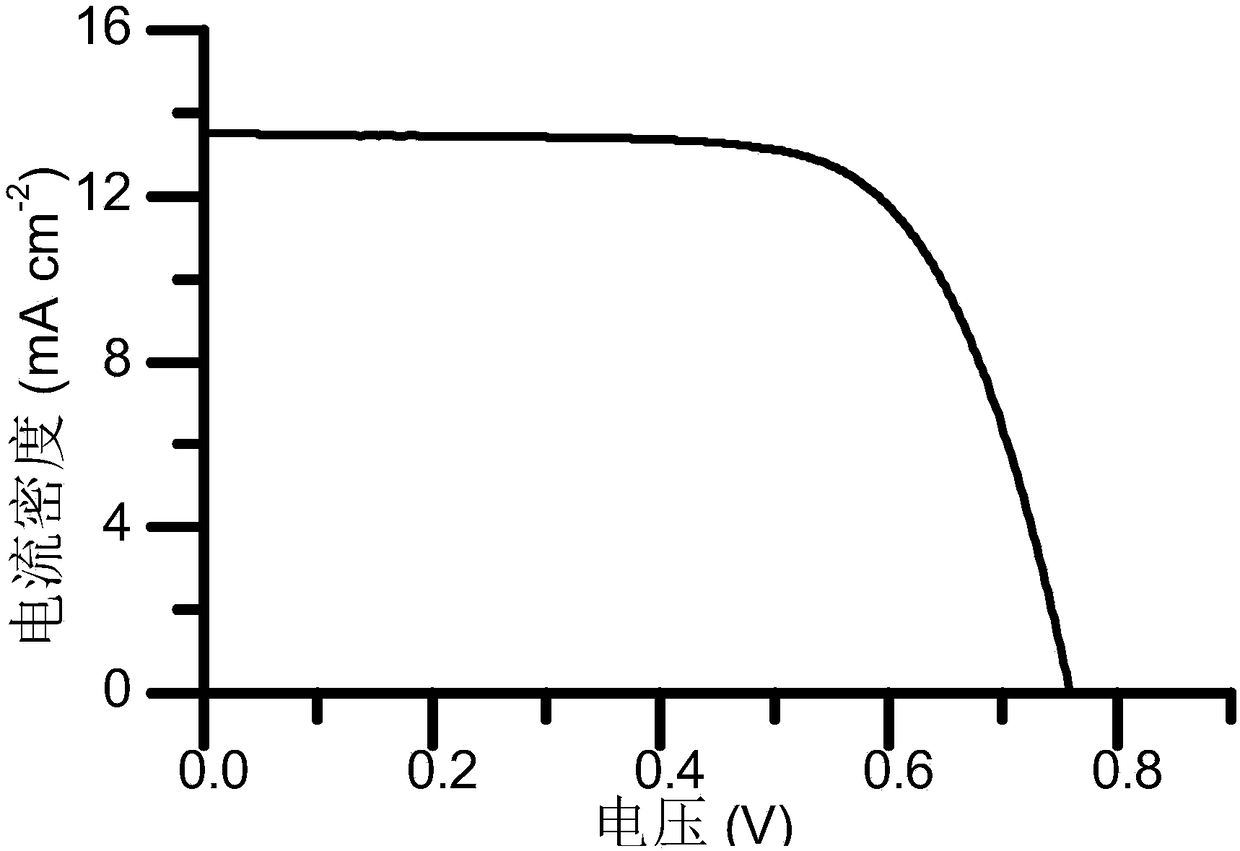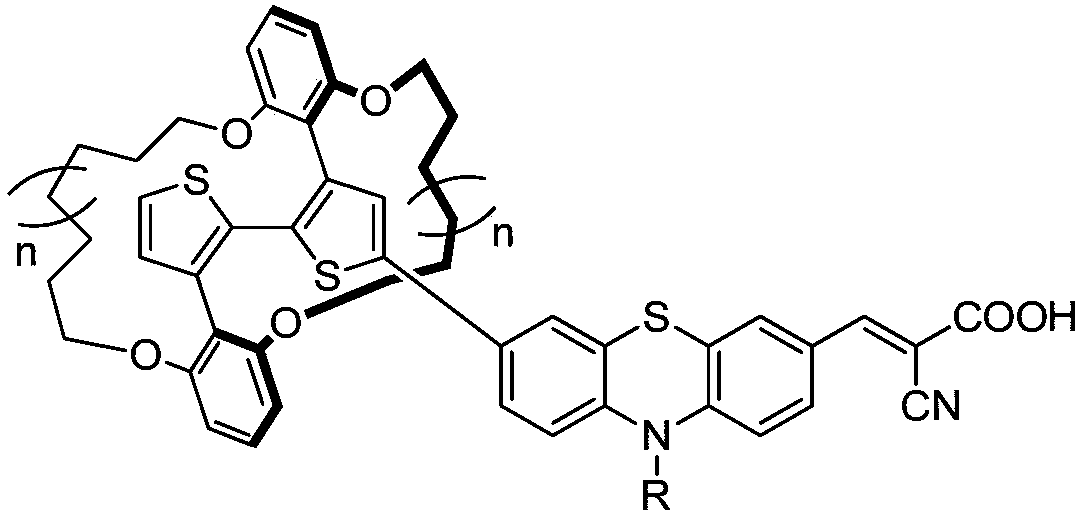Bridged-ring dithiophene-phenothiazine dye and application thereof in dye-sensitized solar cell
A dye sensitization, solar cell technology, applied in thiazine dyes, organic dyes, circuits, etc., can solve problems such as air pollution and greenhouse effect, and achieve the effects of improving photoelectric performance, high yield, and simple preparation method.
- Summary
- Abstract
- Description
- Claims
- Application Information
AI Technical Summary
Problems solved by technology
Method used
Image
Examples
Embodiment 1
[0023] Bridged ring dithiophene-phenothiazine dye PTZ1 (n=2, ), the synthetic route is as follows:
[0024]
[0025] (1) Synthesis and characterization of compound 2, the synthetic route is as follows:
[0026]
[0027] Specific steps are as follows:
[0028] In a 50mL single-necked round bottom flask, add compound 1 (200mg, 0.50mmol) and 15mL tetrahydrofuran (THF), and stir in an ice bath; dissolve NBS (N-bromosuccinimide, 96.9mg, 0.55mmol) In 10mL THF, transferred to a constant pressure dropping funnel (with a glass stopper), and slowly added dropwise to the reaction system; after stirring for 2 hours in an ice bath, the reaction was continued for 8 hours at room temperature; after the reaction was completed, The reaction solution was fully transferred to a separatory funnel filled with sufficient water, extracted three times with dichloromethane, dried by adding anhydrous magnesium sulfate, and the filtrate obtained after filtration was evaporated under reduced pre...
Embodiment 2
[0051] The organic dye PTZ1 prepared in embodiment 1 is carried out ultraviolet-visible absorption spectrum test, and concrete test condition and instrument are as follows:
[0052] Solvent: dichloromethane
[0053] Concentration: 1×10 -5 m
[0054] Temperature: room temperature
[0055] Instrument: Shimadzu UV-2450 UV-Vis spectrophotometer.
[0056] The UV-Vis absorption spectrum obtained from the test is shown as figure 1 shown, from figure 1 It can be seen from the figure that the PTZ1 dye molecule mainly has two obvious absorption peaks in the 300-650nm region. Among them, the absorption peak at 300-450nm is mainly the π-π* electronic transition peak, and the absorption peak at 450-650nm is mainly due to intramolecular electron transfer, which is not significantly different from the absorption of ordinary dye molecules. The main difference is that the introduction of bridged dithiophene makes the absorption spectrum red-shifted and the absorption range is wider.
Embodiment 3
[0058] Fabrication of dye-sensitized solar cells
[0059] The organic dye PTZ1 prepared in Example 1 is used as a sensitizer in a dye-sensitized solar cell to prepare a dye-sensitized solar cell based on a dye-based PTZ1 sensitizer, specifically using the dye PTZ1 as a sensitizer for a dye-sensitized solar cell part, will be loaded with nano-titanium dioxide (TiO 2 ) conductive glass substrate soaked in the dye bath solution prepared by dye PTZ1, the dye PTZ1 is adsorbed on the surface of nano-titanium dioxide through the anchoring group (cyanoacetic acid group), thereby preparing a working electrode, and the dye PTZ1 is used as a dye-sensitized solar cell The sensitizer part is the key factor to determine the superior performance of the battery.
[0060] Dye-sensitized solar cells also include the following devices: conductive glass substrate (doped SnO 2 Conductive glass, namely FTO), electrolyte (iodine electrolyte), platinum counter electrode (platinized conductive glass...
PUM
 Login to View More
Login to View More Abstract
Description
Claims
Application Information
 Login to View More
Login to View More - R&D
- Intellectual Property
- Life Sciences
- Materials
- Tech Scout
- Unparalleled Data Quality
- Higher Quality Content
- 60% Fewer Hallucinations
Browse by: Latest US Patents, China's latest patents, Technical Efficacy Thesaurus, Application Domain, Technology Topic, Popular Technical Reports.
© 2025 PatSnap. All rights reserved.Legal|Privacy policy|Modern Slavery Act Transparency Statement|Sitemap|About US| Contact US: help@patsnap.com



